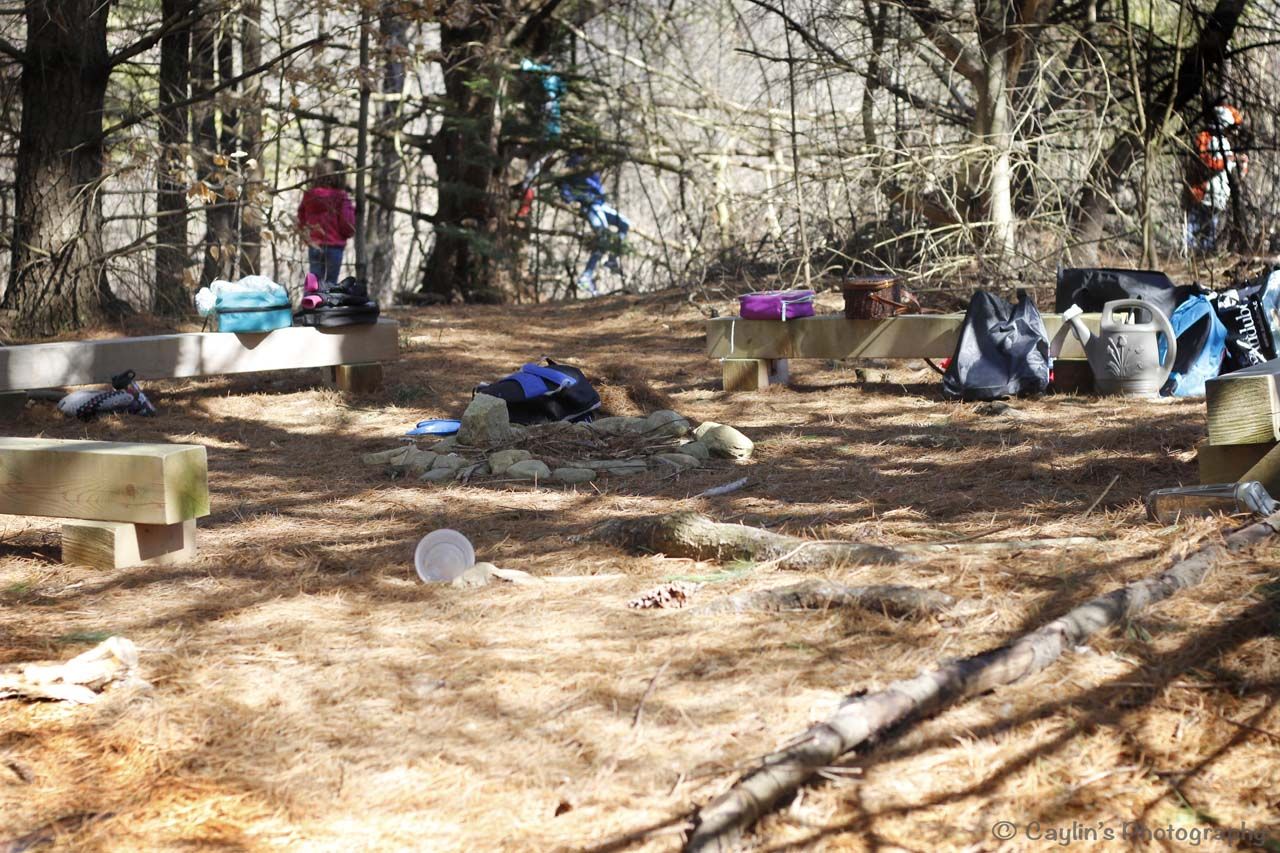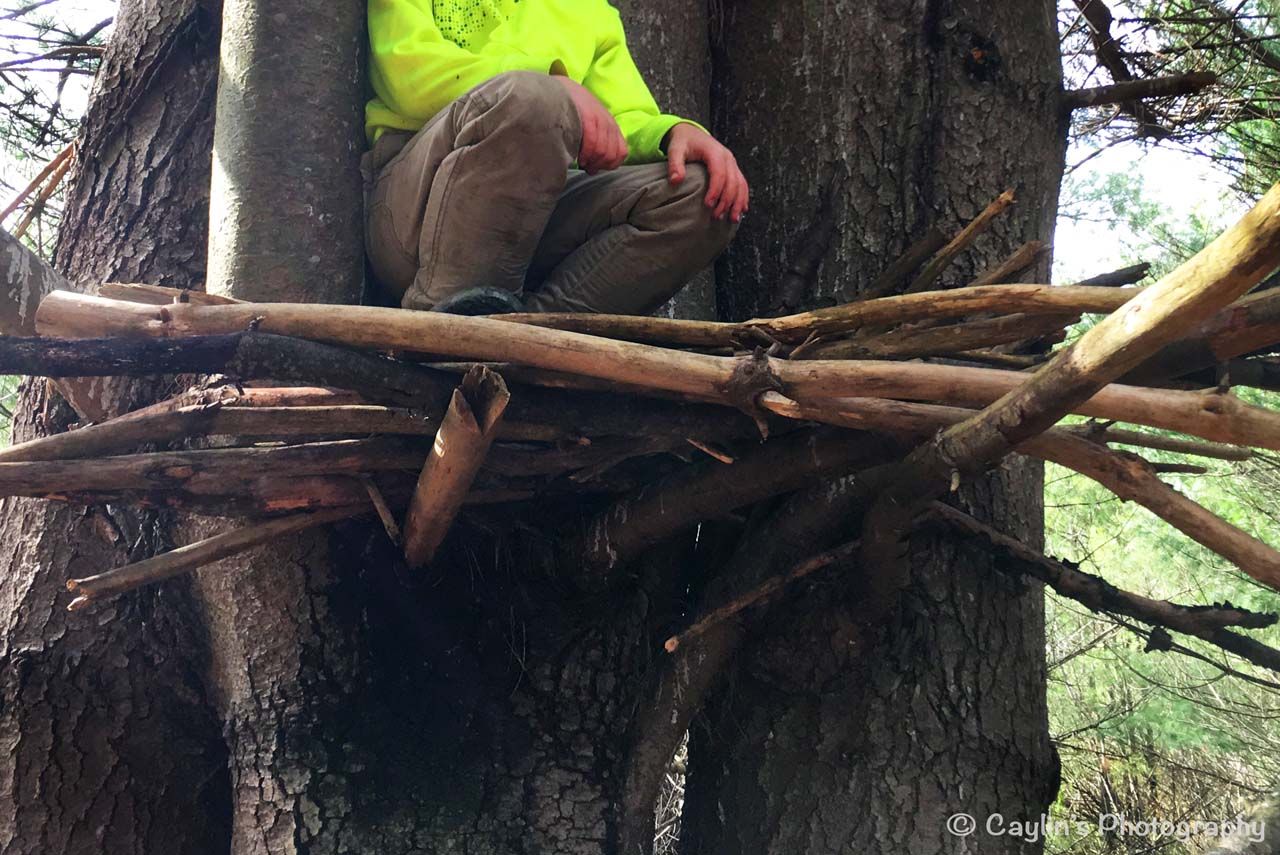
Blog
Stories from my personal journey learning about and delivering Nature-rooted programs across three different countries
Running out of time for Democracy!
Caylin (Forest Schooled)

Empty space, drag to resize
Short on time? Listen to this blog post as a podcast. And subscribe to my podcast channel on Apple Podcasts, Google Podcasts, or Spotify.
I feel like a bit of a Forest School hypocrite when I say that I've made conscious decisions about how to "structure" the Forest School sessions I lead. It feels hypocritical because Forest School is not really meant to be "structured." It's about being learner-led, flexible to the ever-changing interests and elements, and allowing the freedom for playful pursuit!
However, in order to create a space for these kinds of experiences, there has to be some sort of "structure". Maybe that's not in the form of planned activities on a time schedule, but it can be through establishing routines and group agreements (Forest School Association, 2011).
I recently started a new Forest School after-school program for 5 to 11 year olds at a local public school and have found it challenging to establish routines and agreements with this new group (especially because it's a rowdy bunch of kids who've just finished a whole day of school in which they've barely stepped outside at all). My conscious decision about "structure" for this group is to have a group meeting at both the start and end of each session. My thoughts are that the beginning is a time for us to collect together, have a snack, and make announcements. The end meeting is a time to share and reflect on the experiences and learning of the day. I view these meetings as a method of community building and a means to create a system of communication, collaboration, and support. Sounds very democratic and harmonious doesn't it?
Well, in the first few sessions I had with this group it was apparent they did not feel the same way. Understandably, the children were very excited and just wanted to go and play as soon as we got out to the woods. We were able to establish boundaries and basic group agreements (look after yourselves, each other, and the forest), but they weren't very interested in checking in with me or with their peers at the beginning or end.
After the first two sessions I felt comfortable that they all knew how to stay safe, but we weren't really fostering any dedicated time for whole group sharing and discussion. I questioned whether having such a structure was really necessary since it obviously wasn't very important to them. Forest School is supposed to be learner-led after all, right? But then I realized it was important to me. So I told them that.
And guess, what? They listened! I told them all at the start of the the third session that it really meant a lot to me to check in with everyone at the beginning and end of each session. I asked whether they'd be willing to dedicate some time to doing this and to really try to listen to each other during these meetings. They all agreed. It was a wonderful collaborative victory I felt quite proud of, to be honest!
But then a couple of weeks later I ran into a bit of a snag... somewhat literally. One 6 year old boy named Jeffrey had spent almost the entire session building a small platform in the branches of a tree that was quite close to our seating area. He was very pleased with his creation and understandably wanted to spend the rest of his time enjoying sitting on it.
As I gathered the group together in our final 20 minutes of the session, Jeffrey remained on his platform in the tree while everyone else came and sat down in our circle. He asked me if he could stay in the tree for our group meeting since it was right next to everyone anyway.

In an effort to include everyone in making this decision democratically, I passed on his question to the group. I asked, "How does everyone feel about Jeffrey staying in the tree during group meeting?" Immediately several of the children expressed they felt it wasn't fair. They wanted to be in a tree too, but there wasn't any room in Jeffrey's tree and there were no other trees nearby that were climbable. However, some kids said they didn't mind Jeffrey being in the tree and it wasn't a problem... How were we to make a decision when views were so divided?
Then a 7 year old girl named Maggie shouted, "I have an idea!! We can do a vote! If more people vote it's ok for Jeffrey to stay in the tree then he can stay. If more say he shouldn't, then he can come down." I looked to the group and all seemed to agree, including Jeffrey. So I double checked this with Jeffrey, "Okay Jeffrey, so are you agreeing that if more people vote for you to come down from the tree then you'll be ok with that and you'll come down?"
Jeffrey thought about that for a moment and then said, "No! I don't want to come down. I'm not that far from everyone, so it's fine that I just stay in the tree."
Then Maggie said, "But let's vote on it!"
I responded, "But Jeffrey says he still won't come down even if we vote for it, so I'm not sure voting will solve the problem..."
Then I looked at my watch and realized that 18 minutes of those final 20 minutes had been used up by our discussion and debate and I had to get these children packed up, out of the woods, and back to their parents in 2 minutes... Reluctantly, I told everyone we'd run out of time and needed to pack up and go. Democracy over. Jeffrey came down from the tree and we made our way out of the woods.
It felt so chaotic to end the session that way. I was disappointed we hadn't had any closure on the matter and that we hadn't reached agreement. We had run out of time for democracy! I was also disappointed we hadn't been able to spend any time hearing what the other children had done and learned that day. I started to question whether I could have handled the situation in a better way. Truth be told, I probably could have! But I'm still learning too...
What I did decide to do is to try to find a way to address what had transpired the next time we met for continuity and closure. So, during the group meeting at the very beginning of the next session, I asked the group, "We have our main group agreements to look after ourselves, each other, and the forest and I'm wondering whether anyone would like to add to or adjust these agreements in any way?"
There were a spattering of suggestions that included things like respecting each other's shelters (a previous source of conflict), always sitting in the same seat during group meetings, and... everyone sitting together either on a bench or on the ground (not up a tree) during group meetings.
I introduced a simple voting mechanism: thumbs up for agree, thumbs down for disagree, and thumbs sideways for neutral. One by one, we voted with our thumbs on each of the measures. We provided space for all to share their views and then adjusted our proposed agreement based on what people said until we came to consensus. In about 15 minutes we had new agreements:
- We would take care of and respect other people's built work (e.g. a shelter or other project)
- We could sit in the same seat each time during group meetings if we wanted to, but didn't have to
- All would sit together on a bench or on the ground (not up a tree) during group meetings
Even Jeffrey agreed to that last one!
I was both surprised and reassured that the collaborative process worked. It also highlighted how these processes can be slow and require patience and time. By addressing these agreements at the beginning of the session, we were able to avoid the counting down of the clock that the end of a session brings. This emphasized why group meetings at the beginning and end can be valuable. It also provided a space and avenue for us all to talk about other issues we'd encountered (such as having our shelters knocked down by someone else) and come up with solutions that preempted future conflicts.
It made me appreciate that I'd stuck to my guns about establishing a "structure" within Forest School for these discussions to take place. And I think the children are starting to appreciate that a little more now too...
“In our experience, initially, the professional 'expert' will often be seen as the leader of a community group. It is essential, therefore, that early in the life of the group, people are given an opportunity to challenge the expert role so that the group can progress to a more collaborative and cohesive stage. It is also important that professionals react positively to such a challenge. It's important to be open to feedback (regardless of its validity or the eloquence with which it is phrased) and encourage further constructive and negative feedback.” (Sarkissian, 2009, pg. 172)
References:
Forest School Association. (2011). Full Principles and Criteria for Good Practice. Retrieved from https://www.forestschoolassociation.org/full-principles-and-criteria-for-good-practice/.
Sarkissian, W. (2009) Kitchen table sustainability: Practical recipe for community engagement with sustainability. London, UK: Earthscan.
More Posts
WANT TO GET FOREST SCHOOLED TOO?
Subscribe to my email letters, something special from me to you so we can learn together. Each one is filled with heart-felt stories from the forest, resources you may find useful, and things that hopefully bring a smile too.
Thank you!
© by FOREST SCHOOLED
